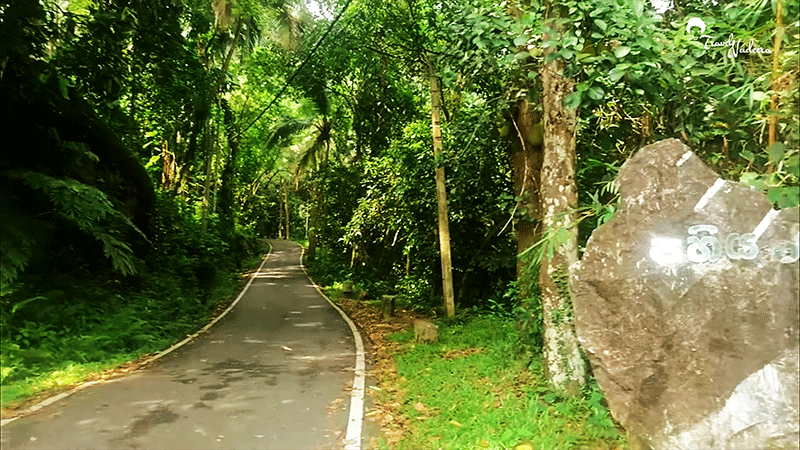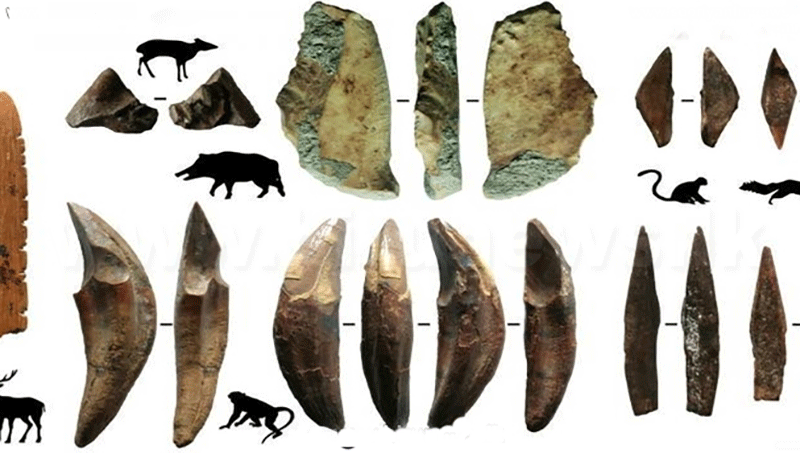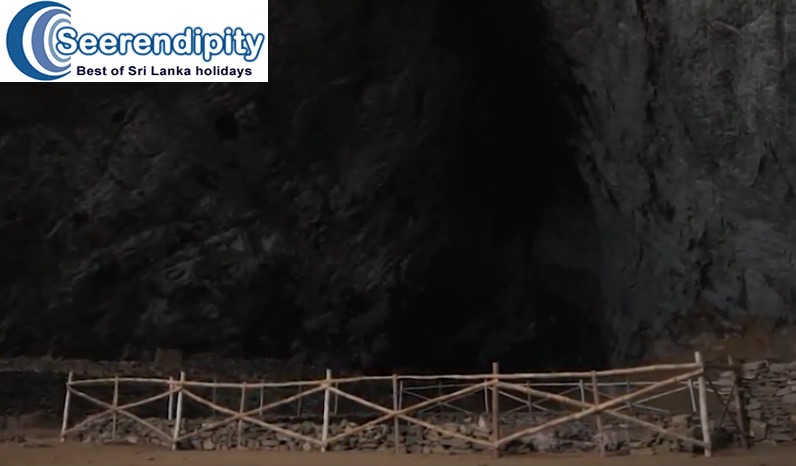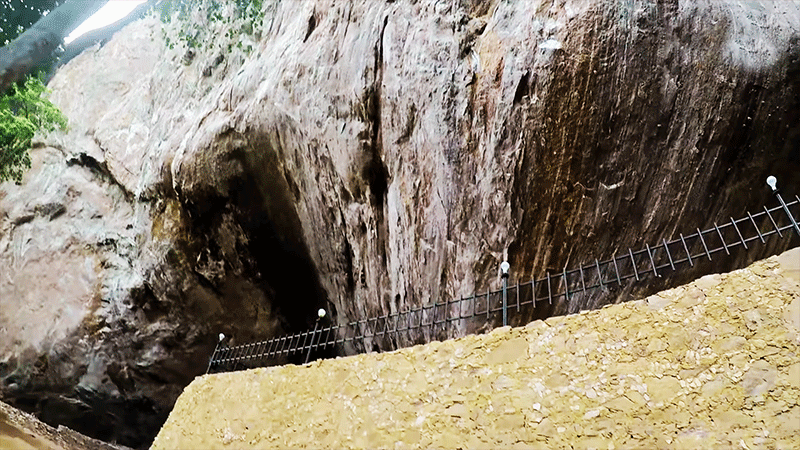Mesolithic Man Of Sri Lanka, Who Used the Oldest Arrowheads Outside of Africa
Oldest Arrowheads Outside of Africa Have Been Found in The Rainforests of Sri Lanka. It is confirmed using the Carbon-14 tests that the tools originated 48,000 years ago. The research also reveals the evidence of adaptation of humans to a different environment and climate condition for the first time once they left the African continent and moved to the tropical rain forest. Which was previously thought to be an obstacle to human occupation, with limited prey opportunities and disease challenges.
Table of Contents
- How to go to the Pahiyangala cave?
- How to book a Pahiyangala cave tour?
- The nature of the ride to Pahiyangala
- Pahiyangala cave is largely unexplored
- The importance of the Pahiyangala cave
- The new findings on the Pahiyangala stone age man
- Humans moved to the rainforests of Sri Lanka from the African continent
- Immediate surrounding of the cave
- Measurements of the natural cave
- Archaeological evidence
- Pahiyangala Manawakaya
- Historical evidence
- Buddhist monastery
Nestled in the deep jungles of Sri Lanka’s western province in the region of Pahiyangala, the archaeological site of Pahiyangala contains a large number of artefacts spanning 34000 to 48000 years of human history in the world.
Pahiyangala cave is nestled in the thick jungle away from the hustle and bustle of the civilized world. It is a perfect spot to have a peaceful life, I believe that people who lived in the cave must have enjoyed the peace and serenity. I felt the calmness of the spacious granite cave and I was drawn to the ancient dwelling without any purpose.
How to go to the Pahiyangala cave?
Our car rolls down the well-laid tarred road. It is wide and seems to be well maintained for many years. Our vehicle is heading away from the west coast beaches and heading to the interior of the country. The road got less and less crowded and after about 1-hour drive from the west coast beach resort, it seems to be that we are heading to an uninhabited region. The number of vehicles coming from the opposite direction is decreasing by every kilometre and even the people on the road.
How to book a Pahiyangala cave tour?
Seerendipity tours organize the one-day trip to Pahiyangala cave from beach hotels on the west coast, south coast and Colombo. Pahiyangala cave temple tour includes many other important tourist attractions along with Pahiyangal cave such as Bopath Ella (waterfall) and Saman Devala ancient temple. For more information on this Pahiyangala cave tour please write to us at seerendipitytours@gmail.com or call us on 0774440977.

The nature of the ride to Pahiyangala
However, the wayside scenery is spellbinding, which is dominated by lush green vegetation and occasional huge boulders with green-capped mountains in the backdrop. Rubber plantations, tea plantation, patches of forests and abandoned gardens have encroached the countryside while small houses emerge from the green cover like white mushrooms in about every 100 meters or so.
On either side of the road is a vast green cover, which impossible to gauge in the vastness. The only thing that is possible to ascertain is the richness of life under this vast green canopy. We travelled slightly more than 40 km from the west coast of Kalutara to Pahiyangala. The remote village of Pahiyangala is set in the lush green foliage, where the huge boulders sprinkle without any visible pattern.
Pahiyangala cave is largely unexplored
Pahiyangala is an ideal spot to enjoy pure nature and can be very promising for eco-holidays. However, I did not encounter any tourist in Pahiyangala for the last few hours or so, since we reached it. I believe the provincial government have to work out a plan to attract tourist to this natural cave, which shares important information about the ancient civilization that flourished based in this ancient cave.
The importance of the Pahiyangala cave
Sri Lankan Pahiyangala cave, which is one of the most ancient residences of Sri Lankan Stone Age man, displays a large number of artefacts dating back to 37000 years and offers very clear insight into the life of Sri Lankan stone age man.
Pahiyangala was the residence of the ancient stone-age man, who lived in Sri Lanka’s rainforests. A lot of facts have been already discovered about this ancient civilization. But, as we know historical facts tend to renew more frequently than scientific findings. The latest research conducted by a group of archaeologists has produced a totally unexpected theory, the latest theory based on the discoveries challenge previously held beliefs about using the arrows and bow by the ancient civilizations.
Beyond the sheer magnitude of the size of the ancient dwelling and the deep history of the archaeological site encompasses, Pahiyangala also provides valuable and detailed information about how the Mesolithic man lived in Sri Lanka and adapted to a difficult living habitat. The recent study based on Pahiyangala cave temple unearthed a whole lot of new information about the lifestyle and activities of the ancient man.

The new findings on the Pahiyangala stone age man
On this fact-finding mission, we are supposed to collect facts discovered recently based on ancient civilizations. This information will be published on our existing blog post on Pahiyangal cave, which published 9 years ago.
A group of archaeologists, who had worked on projects in the cave have unearthed ae considerable discovery of using arrow and bow to hunt animal by the ancient human in Pahiyangala.
There is no doubt that a large variety of animals such as squirrels, monitor lizards, monkeys as well as many other avian fauna species offered abundant resources to an ancient human who roamed these jungles in small family groups of hunter-gatherers. Even today it is not difficult to spot those living beings in the vicinity of the cave.
A lot of valuable information to prove the prehistoric people’s relationships with animals has been discovered during the excavation at the site. Fragments of bones of many animals that belonged to the butchered animals discovered alongside remnants of chipped bones and stone tools and ancient fire hearths. Evidence of such games at Pahiyangala and Kitulgala offers an insight into the time when life in these pristine jungles was ample.
Humans moved to the rainforests of Sri Lanka from the African continent
According to the main researcher of the project Oshan Wedage, the cave dwellers of Pahiyangala (48000 years ago) had managed to live in an environment away from the coast for the first time in human history after leaving the African continent in Sri Lanka.
Wedage said “We were able to recover a large number of tools from Pahiyangala and Kithulgala which were identified as ‘bone points’, a weapon created by animal bones to make arrowheads to hunt animals.
According to Wedage, After receiving specialist knowledge about the tools from Max Planck Institute for the Science of Human History in Germany and Dr Michelle Langley from Griffith University in Australia, they had been able to conclude that this tool was used as an arrow to hunt fast-moving animals in the rain forest.
It is confirmed using the Carbon-14 tests that the tools originated 48,000 years ago. The research also reveals the evidence of adaptation of humans to a different environment and climate condition for the first time once they left the African continent and moved to the tropical rain forest. Which was previously thought to be an obstacle to human occupation, with limited prey opportunities and disease challenges.
Immediate surrounding of the cave
The Pahiyangala rock cave is to be found in the remote area of Yatigampitiya near the city of Bulathsinhala, Western Province of Sri Lanka. The cave and the rock perfectly mingle with the thickly forested area and harbour many species of Fauna and Flora. This eye-catching environment is abundant with very precious varieties of woods such as Teak, Mahogany, Palu, Weera, and Ebony.
Pahiyangala is sandwiched between the central mountain range and the Indian Ocean. The entire region is very rich in water, Fauna and Flora. Pahiyangala belongs to the wet zone of Sri Lanka, where the annual rainfall measure is very high.
The seasonal monsoon sweep across the region mainly from April to November. This monsoon wind starts its journey from the sea and carries a lot of fluid. This seasonal monsoon wind delivers ample rainfall to the western parts of Sri Lanka. Green cover in Pahiyangala and surrounding areas has surged as it is fed by countless rain-filled tributaries that snaked into a green, fertile plain. The thick green cover testifies to its richness in water and visitors hear the tickling sound of perennial waterways hidden in the forest.
It is clear that the residents, who lived in the did not have any hardships in finding water and food. Earlier findings confirm that Mesolithic men, who lived in Pahiyangala had managed to cultivate rice and many other crops as well as feed on meat.
Pahiyangala rock cave and the surrounding forested area is rich in endemic fauna and flora species and it is under the purview of the archaeological department. Pahiyangala rock and the cave, as well as the surrounding area, is frequented by many species of butterflies as well.
Measurements of the natural cave
The cave had been a perfect residence during the dry as well as the wet season. The cave remains dry even during the torrential rain of southwest monsoons. Still, unlike most other ancient caves, where people lived, here it is not possible to see the drip ledges, that prevent rainwater from entering the caves. Even though the cave seems to be small from the outside it is a lot more spacious than it seems from outside. The spacious cave can accommodate up to 3000 people without any hindrance.

The spacious cave is 150 feet in height and 147 feet in width. The cave can be reached after climbing 400 steps. The Pahiyangala rock is granite monolith, which is more than 600 feet in height and lies 1460 meters above sea level. The immediate surrounding Pahiyanagala rock is very quiet and the ancient man who dwelled at the cave must have enjoyed the peace and tranquil prevail at the site.
The pre-Christian cave dweller, who lived in this cave is known as Pahiyangala Manawakaya or Pahiyangala Man. This stone-age cave dweller believed to be using stone implements on their day to day activities.
Biologically known Pahiyangala Manawakaya had been smaller in size compared to the present-day human. The vertebral structure of the Phiyangala Manawakaya had been considerably short and he possessed wide jawbones with a large palette and big grinding teeth.
This cave was used as a Buddhist monastery complex during the Kandy period (1592-1815). Paintings and the statues of the shrine room built in the Kandyan period are still in good condition. Subsequently, it became a Buddhist temple, which is a seat of religious and spiritual training for monks and laymen today.
Archaeological evidence
One of the skulls discovered at the site belongs to a man who lived in the cave dating back to 34000 to 37000 years. The age of the skull was confirmed by the carbon 14 method and the skull provides clear evidence of the existed Mesolithic man on the island in the middle age of prehistory. USA scientists Professor Kenneth Kennedy was interested in the archaeological founding of the site and did the examination of the skull.
Pahiyangala cave is the biggest of its kind in Southern Asia. Same time the cave is the place, where the oldest human settlement existed in the region. Being the oldest settlement in Asia, it considers one of the best places to use for research purposes on pre-Christian humans in the region.
In the month of June in 2012, an important discovery was done at the site, in which a complete skeleton of a stone-age man was discovered. The age of the skeleton is measured to be 30000 years after the carbon dating method.
Pahiyangala Manawakaya
Biologically known Pahiyangala Manawakaya had been smaller in size compared to the present-day human. The vertebral structure of the Phiyangala Manawakaya (Pahiyangala human) had been considerably short and he possessed wide jawbones with a large palette and big grinding teeth.
Historical evidence
It is believed that Pahiyangala rock cave had been a living quarter for Buddhist monks for many centuries. One of the key figures that provide valuable facts about the history of Sri Lanka, known as Fa-Hsien, a monk from China, lived on the island for more than 2 years in the 5th century AD. The monk had travelled to many religious places on the island during his stay and had most of his experience and the places he encountered are properly documented. According to the historical notes, this Chinese monk had been to the Pahiyangala rock cave.
Buddhist monastery
This cave was used as a Buddhist monastery complex during the Kandy period (1592-1815). Paintings and the statues of the shrine room built in the Kandyan period are still in good condition. Subsequently, it became a Buddhist temple, which is a seat of religious and spiritual training for monks and laymen today.






